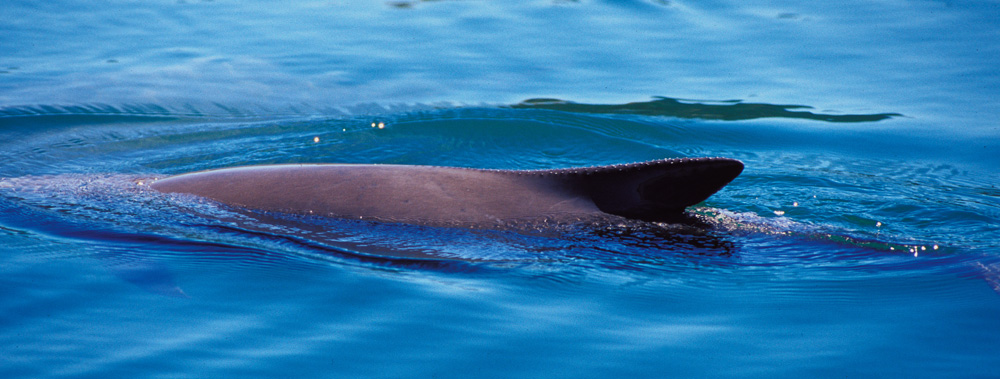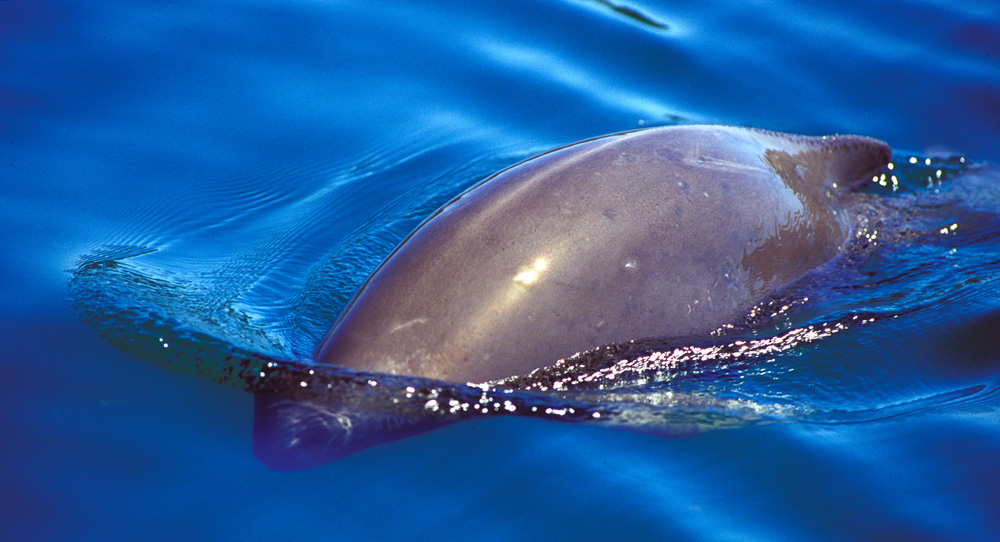Scientific Name
Phocoena spinipinnis
Conservation Status (IUCN)
Near Threatened (may be considered threatened with extinction in the near future)
Range
Within 50 km of shore of South America. From Northern Peru, down the west coast of all of Chile, through Tierra Del Fuego, and up the east coast of the continent along Argentina, Uruguay, and the southernmost parts of Brazil. Atlantic and Pacific populations may be distinct from one another, but further study is needed.
Identifying Features
Dark body, black to dark grey with some light streaks on the chin and belly. Darker eye patches, lips, and chin-to-flipper stripes have been described, with the chin-to-flipper stripes being asymmetrical and vary according to individual.

The dorsal fin is far back along the body, and rises at a shallow angle with a straight to convex trailing edge. There are tubercles (small rounded nodes) on the leading edge of the dorsal fin, which is the characteristic that has given the species its scientific name.
10-23 teeth in each upper row and 14-23 teeth in each lower row, spade shaped as in all porpoises.
Behavior and Ecology
Groups of up to 70 individuals have been seen, but most sightings are of groups of less than 6. They are inconspicuous animals that surface with very little disturbance to the water.

Reproduction
Gestation lasts 11-12 months, with the population in Northern Peru calving mostly in late summer to early fall.
Lifespan
Insufficient information is available to determine an average lifespan.
Diet
Squid and shrimps, as well as anchovies, hake, and other demersal and pelagic fish species.
Conservation Concerns
Burmeister’s porpoise are shot and harpooned for use as crab bait in southern Chile, and caught deliberately and as by-catch in Peruvian waters (deliberate catch for use as shark bait or for human consumption).
Further Reading and References
[zotpress items=”3CSNGVG3,RS568FJP” style=”apa”]